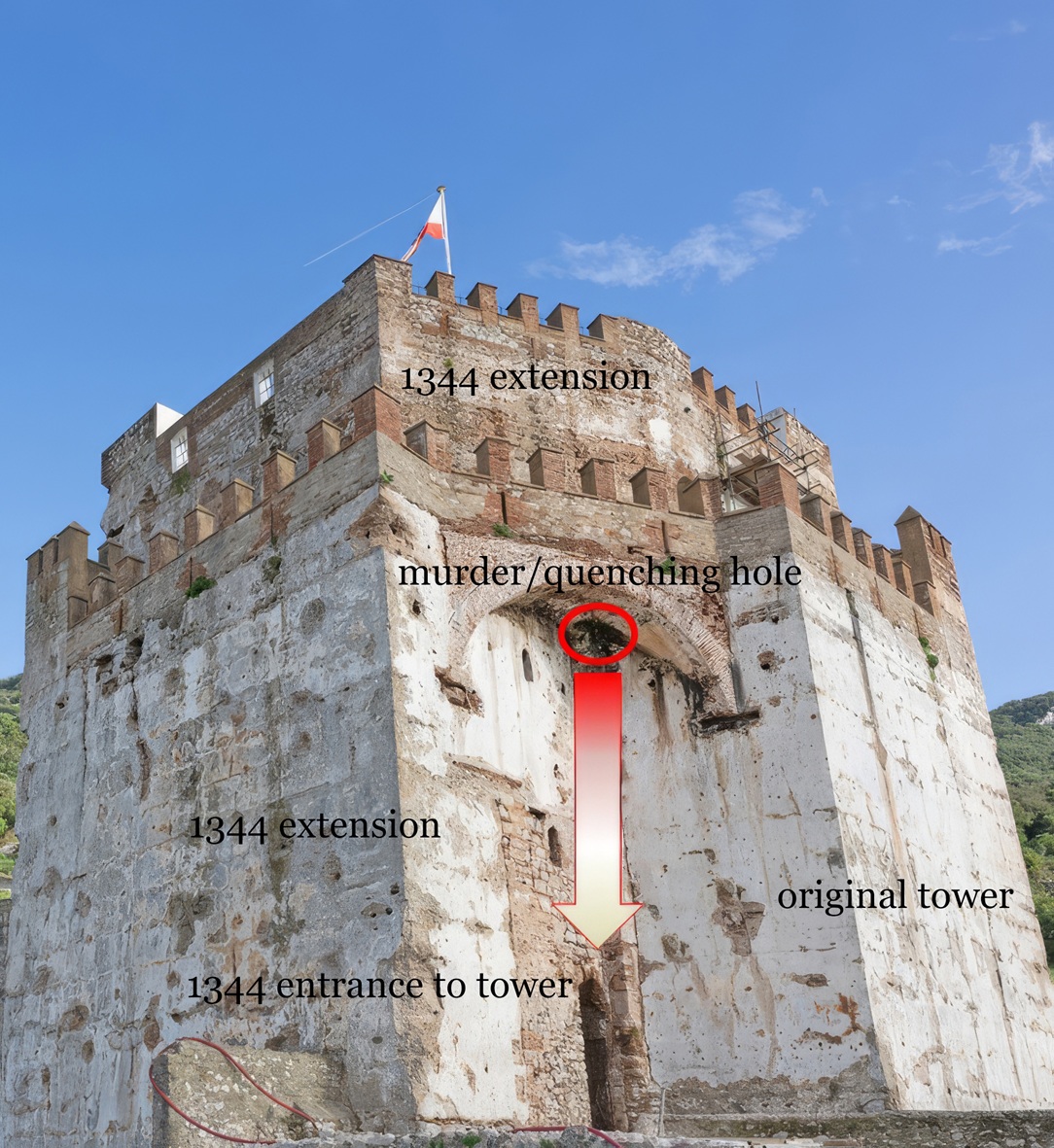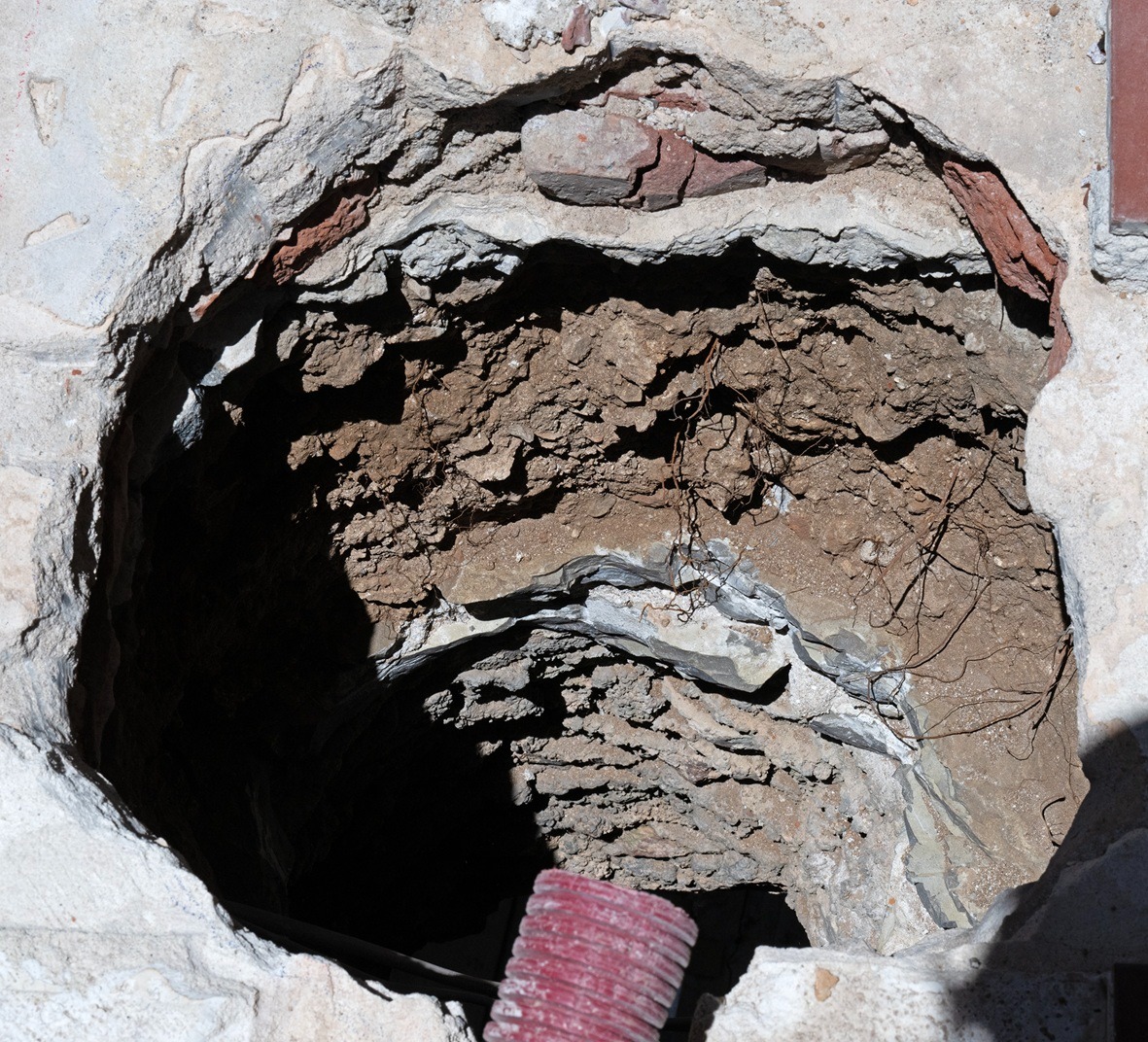Recent discovery deepens understanding of Tower of Homage
Professor Clive Finlayson documenting the newly-discovered ‘Murder Hole’
A recent discovery during conservation works at the Moorish Castle has revealed new information about the construction and defensive design of the Tower of Homage, deepening understanding of its historical development.
The conservation project, which is being carried out alongside a research programme by the Gibraltar National Museum, aims to gather detailed information about the tower and its evolution.
While most findings provide incremental insight, a recent observation has offered a more significant reinterpretation of the structure.
Scaffolding was recently erected on the north-western side of the tower following a delay to protect nesting common kestrels and jackdaws.
The delay allowed both species to breed successfully, with jackdaws nesting at the site for the first time in decades, and with the end of the breeding season the scaffold was erected and conservation works commenced.
“It soon became clear that a hole that had been sealed on the mid-level battlements, which had been covered by a fig tree, and through which an electrical cable had been hung, was no ordinary opening in the battlements’ floor,” the Government said.
“Seeing this, the floor tiles which had been placed on the surface of the battlements during restoration works in the 1970s were removed from immediately above the hole.”
“The opening was discovered to have been crafted deliberately in the construction style of the North African Merinids, who had enlarged the Tower in 1344.”
“The repair and enlargement of the tower, to the size that we know it at present, happened at this time as Gibraltar’s defences were strengthened after the defeat of the combined Muslim forces of the North African Merinids and Granada Nasrids at the hands of the Castilians and Portuguese, west of the Rock.”

The opening has been identified as a Murder Hole (a Meurtrière), typically a hole in the ceiling of a passageway in a fortification through which the defenders could shoot, throw or pour harmful substances or objects; these could have included rocks, arrows, boiling water or oil, hot sand, or quicklime.
The Government said the location of the Murder Hole was highly significant, being situated directly above the only access door to the tower, which had been located there during the enlargement of the tower.
This gave the hole added significance as it could have doubled-up in function to act as a Quenching Hole, through which water could be poured should the attackers set fire to the main door leading to the Tower.
“This defensive mechanism would only have worked if substances could be poured vertically down onto the space immediately outside the door itself,” the Government said.
“Without the hole, the space would have been a blind spot for the defenders.”
“The peculiar shape of the Tower of Homage at its north-western end, with a passageway between the western and northern mid-level battlements, is now easily understood as the passageway was needed in order to locate the Murder Hole just above the tower’s entrance.”
“This would have been the last line of defence.”

The Government added that the finding also explains why the expansion of the tower northwards, to incorporate the covered stairwell, did not follow the line of the earlier tower to form a square.
Instead, the Government said, the recess allowed for the passageway, the Murder Hole and the location of the door directly below it.
"The value of the work being done at the Moorish Castle under the expert supervision of the Gibraltar National Museum goes beyond providing a better visitor site and is revealing new information giving insights into our fascinating but less well-known medieval history,” Minister for Heritage, Dr John Cortes, said.
“The value of the Government’s commitment to unlocking this work and proceeding with the restoration of the Moorish Castle is clearly benefitting the knowledge of our Heritage.”









